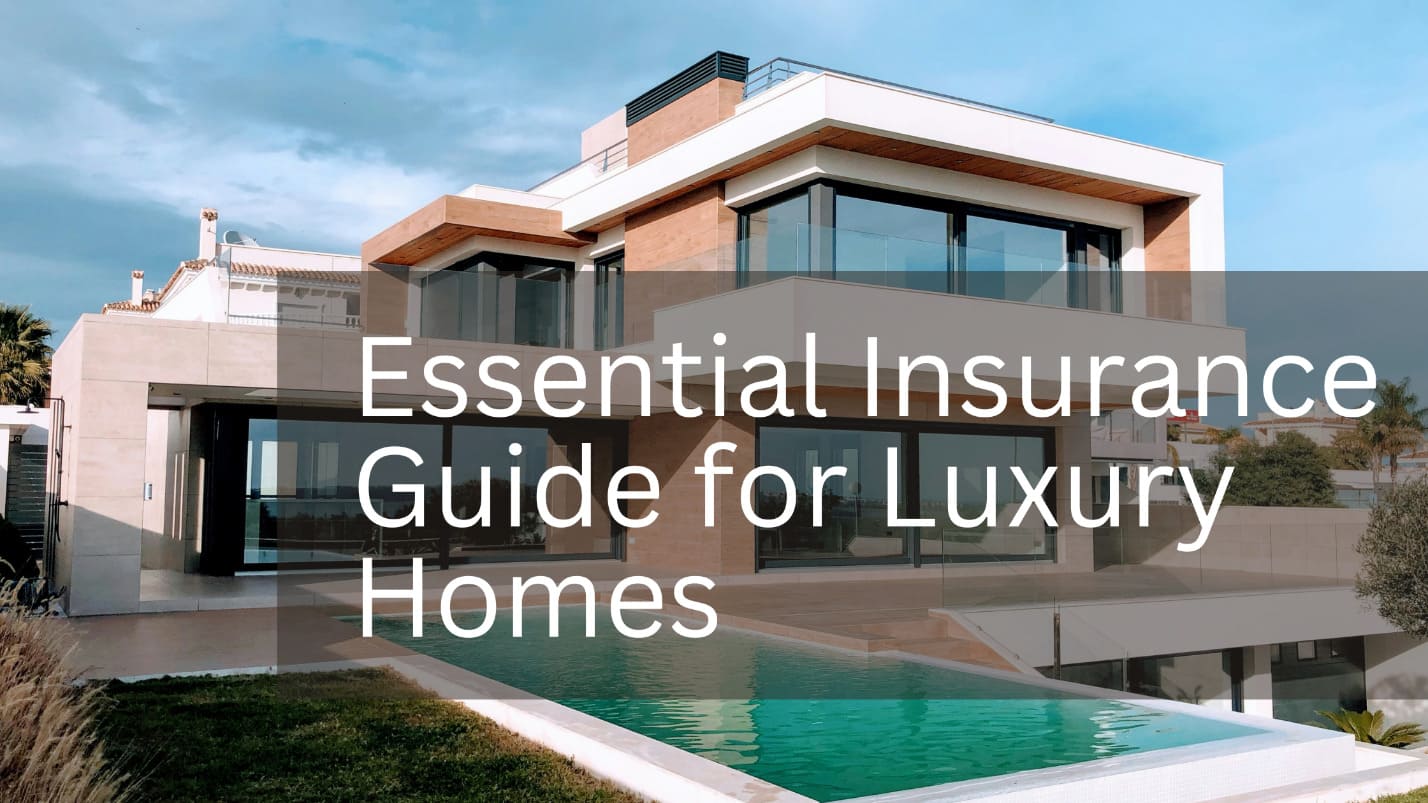Owning a luxury home in the United States comes with prestige, privacy, and unique insurance considerations. Unlike standard homeowners insurance policies, which cover typical risks associated with residential properties, insuring a luxury home requires comprehensive coverage tailored to the higher value, unique features, and increased liability exposures. This comprehensive article explores the essential insurance requirements for luxury homeowners in the USA, covering key considerations, coverage options, risk management strategies, and factors influencing insurance premiums.
Understanding the Unique Needs of Luxury Homeowners

Luxury homes are characterized by their high property values, custom architectural features, extensive amenities, and often expansive grounds. Insurance for these properties goes beyond standard coverage to address specialized risks such as:
- High Property Values: Luxury homes typically have higher reconstruction costs due to custom materials, finishes, and architectural designs.
- Custom Features and Upgrades: Expensive fixtures, specialized construction materials, and unique interior finishes may require additional coverage.
- Valuable Personal Property: Art collections, jewelry, antique furniture, and other high-value possessions may exceed the limits of standard homeowners policies.
- Increased Liability Risks: Larger properties and amenities like pools, guest houses, and home theaters can increase liability exposures for homeowners.
Essential Coverage Options for Luxury Homes
- Dwelling Coverage: Provides protection against damage to the physical structure of the home due to covered perils such as fire, windstorm, or vandalism. For luxury homes, it’s crucial to ensure that coverage limits reflect the full cost of rebuilding or repairing the property to its original condition.
- Other Structures Coverage: Covers detached structures on the property such as guest houses, garages, or fences. The coverage amount should be sufficient to rebuild or repair these structures in case of damage.
- Personal Property Coverage: Reimburses the homeowner for the loss or damage of personal belongings inside the home, including furniture, electronics, clothing, and valuables. Special riders or endorsements may be necessary for high-value items like art collections or jewelry.
- Liability Protection: Offers financial protection against lawsuits for bodily injury or property damage caused by the homeowner, family members, or pets. Given the higher liability risks associated with luxury properties, higher liability limits and umbrella policies are recommended.
- Additional Living Expenses (ALE): Covers temporary living expenses if the home becomes uninhabitable due to a covered loss, such as fire or severe storm damage.
- Flood Insurance: Standard homeowners policies typically exclude flood damage. For luxury homes located in flood-prone areas, obtaining flood insurance through the National Flood Insurance Program (NFIP) or private insurers is crucial.
- Earthquake Insurance: Covers damage to the home and personal property caused by earthquakes, which are not typically covered under standard homeowners policies. This coverage is important for homeowners in seismically active regions.
- Identity Theft Protection: Offers reimbursement for expenses related to identity theft, including legal fees and lost wages, which can be particularly valuable for high-profile individuals.
Factors Influencing Insurance Premiums
Several factors impact the cost of insurance for luxury homes:
- Location: The geographical location of the property affects insurance rates, considering risks such as weather hazards (e.g., hurricanes, wildfires), crime rates, and proximity to emergency services.
- Construction and Materials: The quality of construction, building materials, and architectural features influence insurance costs. Homes built with fire-resistant materials and equipped with advanced security systems may qualify for discounts.
- Home Value and Rebuilding Costs: Higher property values and reconstruction costs result in higher insurance premiums to ensure adequate coverage.
- Claims History: A history of previous insurance claims on the property can affect premiums, highlighting the importance of proactive risk management and maintenance.
- Security Measures: Installation of security systems, surveillance cameras, gated entry, and smoke detectors may qualify for insurance discounts.
- Personal Factors: Factors such as the homeowner’s credit score, occupation, and lifestyle can impact insurance premiums.
Risk Management Strategies for Luxury Homeowners
To mitigate risks and potentially lower insurance premiums, luxury homeowners can implement the following risk management strategies:
- Regular Maintenance and Inspections: Schedule regular inspections and maintenance of the property, including roofing, HVAC systems, plumbing, and electrical systems, to prevent potential hazards and ensure property upkeep.
- Security Enhancements: Invest in robust security systems, including alarms, surveillance cameras, motion detectors, and smart home technology, to deter theft and vandalism.
- Fire Prevention Measures: Implement fire safety measures such as installing fire extinguishers, smoke detectors, and sprinkler systems, and maintaining clear vegetation around the property.
- Disaster Preparedness: Develop and practice a disaster preparedness plan to safeguard the property and family members in emergencies such as hurricanes, wildfires, or severe storms.
- Update Insurance Coverage Regularly: Periodically review and update insurance coverage to reflect changes in property value, renovations, or additions to ensure adequate protection.
- Liability Awareness: Educate family members and guests about potential risks on the property, such as pool safety, and consider liability insurance options like umbrella policies for additional protection.
Legal and Regulatory Considerations
Navigating legal and regulatory requirements is essential for luxury homeowners to ensure compliance and comprehensive insurance coverage:
- Building Codes and Regulations: Adhere to local building codes and zoning regulations when constructing or renovating the property to maintain insurance eligibility.
- Insurance Policy Review: Carefully review insurance policies, including coverage limits, exclusions, deductibles, and policy endorsements, to understand rights and responsibilities as a policyholder.
- Claims Process: Familiarize yourself with the insurance claims process, including reporting requirements, documentation, and timelines, to facilitate efficient claims resolution in the event of a loss.
Conclusion
Insurance for luxury homeowners in the USA is tailored to address unique risks associated with high-value properties, valuable possessions, and increased liability exposures. By understanding essential coverage options, factors influencing insurance premiums, risk management strategies, and legal considerations, homeowners can make informed decisions to protect their investments and assets effectively. Proactive maintenance, security enhancements, and regular insurance policy reviews contribute to mitigating risks, optimizing coverage, and ensuring peace of mind for luxury homeowners in managing their prized residential properties.
